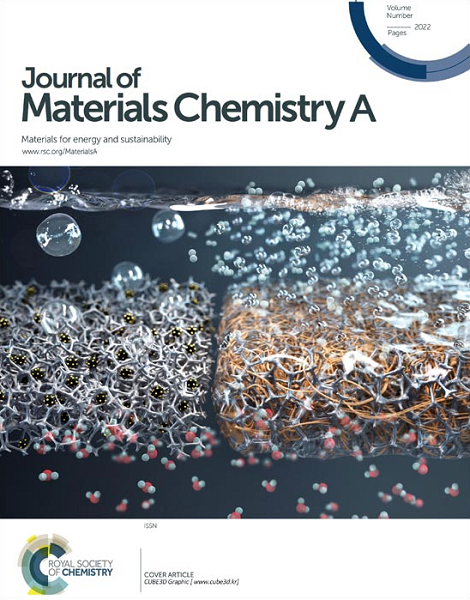Development of a heat storage heater for hybrid electrothermal conversion and latent heat storage
IF 10.7
2区 材料科学
Q1 CHEMISTRY, PHYSICAL
引用次数: 0
Abstract
Grid-scale long-duration energy storage (LDES) is essential for decarbonizing energy systems, including power and industrial heat systems. As an economically viable LDES technology, the development of an electrical thermal energy storage (ETES) system—comprising electrothermal conversion, thermal energy storage, and optional heat engines—is progressing. A key challenge in realizing ETES is the electrothermal conversion process at the several-hundred-MW scale. This study proposes a novel heat storage heater (HSH) that combines electrothermal conversion and thermal storage functions using phase change materials (PCMs). The HSH that achieves high-temperature TES using an alloy-based PCM is a novel material that has not been reported previously. The HSH design allows for GWh-scale heat storage at high density as a several-hundred-MW class electrothermal converter, using a microencapsulated PCM (MEPCM) with a ZnO coating and a Zn–30 mass% Al (Zn–30Al) core. The system exhibited electrical resistivities of at least 9.8 Ω cm due to a conductive network formed by ZnO in the MEPCM. Upon energization, the temperature exceeded the alloy's storage temperature, and a temperature plateau was observed at 470 °C due to the alloy's melting temperature (438–512 °C). This study paves the way for designing innovative electrothermal conversion systems, such as ETES systems.

电热转换与潜热混合蓄热式蓄热加热器的研制
电网规模的长时间储能(LDES)对于脱碳能源系统至关重要,包括电力和工业热系统。作为一种经济可行的LDES技术,电热能储存(ETES)系统的开发正在取得进展,该系统包括电热转换、热能储存和可选热机。实现ETES的一个关键挑战是几百兆瓦规模的电热转换过程。本研究提出了一种新型储热加热器(HSH),它结合了电热转换和使用相变材料(PCMs)的储热功能。使用基于合金的PCM实现高温TES的HSH是一种以前未报道过的新材料。HSH设计允许千瓦时规模的高密度储热,作为几百兆瓦级的电热转换器,使用带有ZnO涂层和Zn-30质量% Al (Zn-30Al)核心的微封装PCM (MEPCM)。由于ZnO在MEPCM中形成导电网络,该体系的电阻率至少为9.8 Ω cm。通电后,温度超过合金的储存温度,由于合金的熔化温度(438-512°C),在470°C处观察到温度平台。该研究为设计创新的电热转换系统(如ETES系统)铺平了道路。
本文章由计算机程序翻译,如有差异,请以英文原文为准。
求助全文
约1分钟内获得全文
求助全文
来源期刊

Journal of Materials Chemistry A
CHEMISTRY, PHYSICAL-ENERGY & FUELS
CiteScore
19.50
自引率
5.00%
发文量
1892
审稿时长
1.5 months
期刊介绍:
The Journal of Materials Chemistry A, B & C covers a wide range of high-quality studies in the field of materials chemistry, with each section focusing on specific applications of the materials studied. Journal of Materials Chemistry A emphasizes applications in energy and sustainability, including topics such as artificial photosynthesis, batteries, and fuel cells. Journal of Materials Chemistry B focuses on applications in biology and medicine, while Journal of Materials Chemistry C covers applications in optical, magnetic, and electronic devices. Example topic areas within the scope of Journal of Materials Chemistry A include catalysis, green/sustainable materials, sensors, and water treatment, among others.
 求助内容:
求助内容: 应助结果提醒方式:
应助结果提醒方式:


